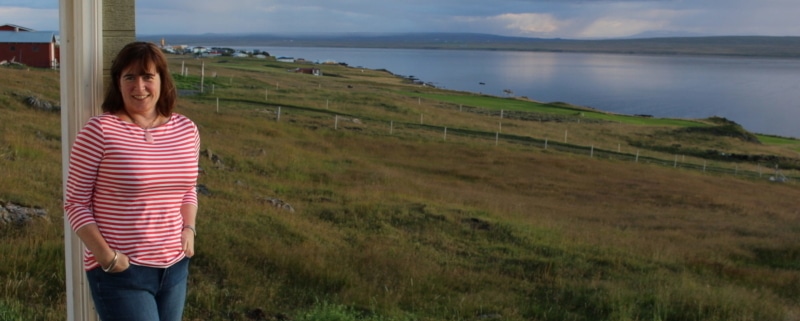2020 was meant to be the Super Year for Nature. It was all planned out. In January, the World Economic Forum in Davos would highlight biodiversity as a rising global risk. In April, the 50th anniversary of Earth Day would kick off celebrations of what can be achieved. The International Day for Biodiversity in May and World Environment Day in June would bring the focus onto nature and what we need to do to protect it. IUCN’s World Congress in Marseille, also in June, would keep the conversation going and provide a platform for calls to action, commitments and commentary on the state of the natural world. The effort would culminate in October in Kunming, China at the Convention for Biological Diversity’s COP15 where a post-2020 framework for biodiversity would be adopted that would send us all – national and subnational governments, NGOs, private sector entities and scientists – into 2021 with renewed vigor for our work of restoring and protecting the planet’s natural resources.
But nature had other ideas.
In early 2020, the virus that would become known as COVID-19 jumped from its animal host to humans (likely via illegal trade in wildlife) and ground the world to a screeching halt. Economies shuttered, health systems became overwhelmed and the perpetual clamor of human activity on the planet diminished to a background buzz of essential employees, contactless commerce and lives increasingly led in the digital domain.
While this great withdrawal has had, and will continue to have, repercussions on every aspect of society, one of the relatively positive outcomes has been a new relationship with nature and an enhanced appreciation for the systems and services the Earth provides to us. We’ve seen the photos of clear skies in India and clean water in Venice, and learned that daily emissions of greenhouse gases plunged by 17% in April when compared to 2019.
We’ve also had personal experiences as nature had put us in a time-out from our normal and fragmented pursuits, slowing us down, bringing us together and limiting our movements. Now the flurry of a bird in our backyard becomes our family entertainment, the emergence of spring across the northern hemisphere becomes our calendar, and our local streets, parks and green spaces become our new movie theaters. Irish journalist Paddy Woodworth recorded a beautiful appreciation of our new-found ability to stop, stare and listen to the world around us. Like the creative people who have given us concerts, plays and events online, nature provides us with a diversion and a solution.
Across Wildlife Habitat Council, we’ve seen habitat project managers bring their work home, transferring their passion for conservation to their own backyards and engaging family members in environmental education and planting efforts. Our family-friendly webinars were viewed over 3,000 times, with many watching as a family unit. We also created tools to support conservation in this time of crisis.
In late May, we commemorated International Day for Biodiversity with a theme of “Our Solutions are in Nature.” While this theme may seem to be drawn directly from the pandemic, it was actually inspired by the work of the IPBES whose report in 2019 laid out, in stark terms, the essential contributions of nature to humanity, the plight of nature globally and the absolute imperative for us to take action for nature for our collective future. This report, with the stark headline 1 Million Species At Risk of Extinction, is the policy foundation for the 2020 Super Year for Nature.
So now what?
This pandemic has done what the IPBES report tried to do. It moved nature into the headline news. It has shown that a disregard for nature and increased pressure on natural systems can wreak havoc on the global economy. It has re-established, in non-indigenous communities, an appreciation for the natural world that had faded beneath the rattle of post-war industrialization and the hum of increasing urbanization.
There are many opinions about how to return to a new normal and use this pause to place our relationship with the planet on a better path. This increasingly common call seeks a re-built economy with green jobs, green investments and a green bottom line. The UN Global Compact (of which WHC is a member) brought together 155 companies with a $2 trillion+ market capitalization to call for a net-zero recovery. And while many thought leaders narrow the focus to climate change challenges and opportunities, strong voices are raised for nature as well.
Inger Andersen, head of UNEP and longtime champion for nature, admonishes that, “An important pillar in our post-COVID recovery plan must be to arrive at an ambitious, measurable and inclusive framework, because keeping nature rich, diverse and flourishing is part and parcel of our life’s support system.” A group of green leaders in the UK, including the Minister for the Environment, Lord Zach Goldsmith, writing in response to an opinion piece linking COVID recovery to climate change, introduced nature as a key solution: “Today, the world urgently needs a new such commitment to nature as we recover from COVID-19. Nature should be at the heart of the recovery we seek.”
There are many options for the private sector to put nature at the heart of the recovery we seek:
Recommit to environmental education so that the generation of learners who experienced this crisis can better understand the natural systems we live in and how we can work to avoid such crises in the future. Across WHC Conservation Certification® programs, 43% have an environmental education or awareness component. It may be tempting to cut such programs under cost containment efforts, like the short-sighted action of Montclair University and New Jersey’s DEP, which are currently seeking to shutter an environmental education resource that changed the lives of generations of students at a time when such resources are more important than ever. Such disinvestment in environmental education today will have consequences for the future, removing one of the key methods for shaping attitudes of future planetary stewards.
Invest in conservation careers – In the New York Times , NWF President and CEO Collin O’Mara called for a Conservation Corps program to offer employment opportunities to 7.7 million young people who are out of work. Private sector business can do the same thing by creating conservation corps jobs to train existing, furloughed or future workers to carry out restoration and habitat management on corporate lands. Operational budgets will be tight for the foreseeable future, but diverting dollars from non-essential land management activities into more ecological projects that provide workers with new, green skills can have a profound impact on careers in transition.
Adopt nature-based solutions for pollution control – Emerging evidence points to polluted air as being an efficient carrier of microbes and the COVID-19 virus. Nature-based solutions in the form of urban and community forestry have been shown to be an effective barrier to airborne particulate matter. In areas of heavy industry where pollution particles move from the factory site into communities, forestry presents a solution that will have multiple co-benefits for employees and community members.
At the highest levels, the private sector can commit to the post-2020 biodiversity framework and its vision that “by 2050, biodiversity is valued, conserved, restored and wisely used, maintaining ecosystem services, sustaining a healthy planet and delivering benefits essential for all people.” An important part of this framework will be to mainstream nature across all industry sectors because without nature, business is not resilient.
The Business for Nature Coalition, of which WHC is a member, is outlining the case for nature as a key element in business resiliency, with a major global leadership event on June 15 that will bring together inspiring business and world leaders to explore why making nature part of decision-making is critical to becoming a future-fit business. This meeting is an unmissable opportunity for business leaders and executives, policy makers and anyone with a stake in nature to participate in a high-level, interactive discussion on the imperative to “act now to reverse nature loss throughout this decade, giving all aspects of society the chance to become more resilient and to thrive within, not beyond, nature’s limits.” (You can register here.)
The bottom line is that nature has given us an opportunity to reset our relationship with it, and it would be foolish and myopic to ignore the chance to build back with nature for a resilient future.

